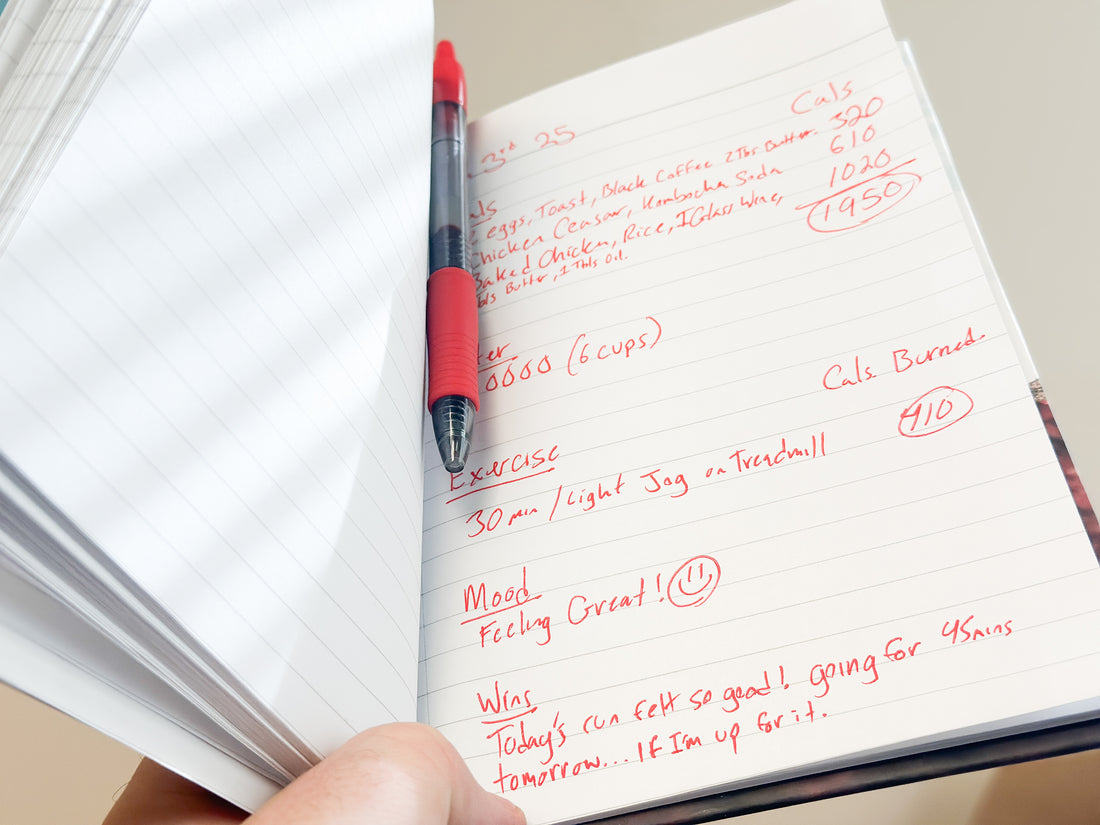
Transform Your Weight Loss Journey with a Simple Journaling Method
Writing things down on paper has a magic to it. It’s tangible, it’s personal, and it keeps you accountable in ways that apps and spreadsheets often can’t. If you’ve been searching for effective weight loss tips, journaling might be the answer you’ve been looking for. Let’s dive into how you can set up your weight loss journal and use it to make real progress.
What Worked for Me Personally
When I started my weight loss journey, I found that counting calories and doing 30 minutes of cardio worked wonders. I saw the pounds start dropping almost immediately. At first, I tried using a few exercise apps, but I often forgot to use them, or the process felt too complicated. When I began writing everything in a journal, everything changed. Tracking my daily calories and workouts became second nature, and the habit stuck. Calorie counting, for example, helped me understand how much energy I was consuming versus burning. This awareness was eye-opening and instrumental in helping me lose 60 pounds. Along the way, I even discovered a new joy in jogging!
Why Journaling Works for Weight Loss
There’s something grounding about writing things down. When you put pen to paper, you’re not just documenting your journey—you’re reinforcing your goals and making them real. Studies show that people who track their food intake and exercise are more likely to lose weight and keep it off.
• Stay Accountable: You’ll think twice about grabbing that extra snack when you know you’ll write it down.• Identify Patterns: Over time, you’ll notice habits, triggers, and foods that work for or against your goals.
• Celebrate Wins: Even small victories, like drinking enough water, deserve recognition.
Setting Up Your Weight Loss Journal
First Choose Your Journal
Pick a notebook that inspires you to write. It doesn’t have to be fancy—just something you’ll enjoy using every day. If you’re into aesthetics, we offer beautiful options that are made and printed in the USA to consider for your personalized weight loss journal.
Hardcover Journals • Softcover Journals • Spiral Bound Journals
Weight Loss Journal Structure Overview
• Goals Section: Use the first few pages of your journal to outline your long-term and short-term goals. You don’t need to revisit this section daily but can refer back to it often for motivation and progress checks.• Daily Logs: Dedicate one full page to each day. This keeps your tracking clear and ensures there's space for every detail without feeling cramped.
• Progress Tracker: Reserve one or two pages at the end of each week or month for a summary of measurements, weight, or even progress photos.
• Reflection: Add a smaller section on your daily log page for quick reflections, or use a separate page once a week for in-depth thoughts.
Daily Log Layout
Here’s how to structure your daily log for each page:
• Date. Write the day and date at the top of the page.• Meals. Divide this into Breakfast, Lunch, Dinner, and Snacks. Leave enough space for detailed entries, e.g., portion sizes, ingredients, or calories if tracking.
• Water Intake.
Draw 8 small boxes (or water droplets) to check off each glass of water. Alternatively, note the total ounces consumed if you prefer precision.• Exercise.
Leave a few lines to write down the type of exercise, duration, intensity, and how you felt afterward.• Mood.
Use drawn emojis or a 1–10 scale for quick tracking. Optionally, write a sentence or two about your feelings.• Wins. Add 2–3 bullet points for positive habits or small victories of the day.
Reflection Section (Optional)
At the bottom of the page, leave a small space for reflecting on challenges, successes, or adjustments to your plan.
Progress Tracker
Create a dedicated layout for weekly or monthly summaries:
• Measurements: Waist, hips, arms, etc.• Weight: Weekly weigh-ins.
• Photos: Attach small printed progress photos or note where you’ve stored them digitally.
• Overall Reflections: What worked, what didn’t, and how you’ll adjust moving forward.
Note: It doesn't have to be perfect or neat! Check out how simple it can be. This is my journal. As long as I can read it, that’s all that matters. I feel so accomplished when I flip back through the month and can say, "I did that!"




